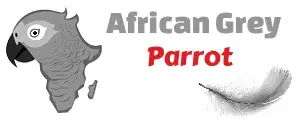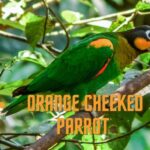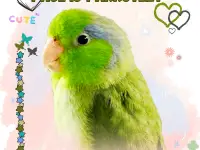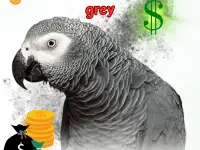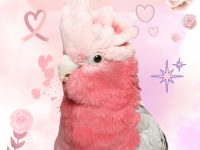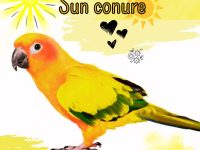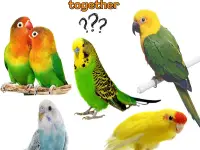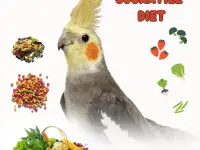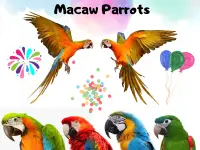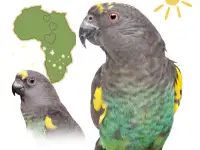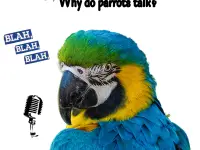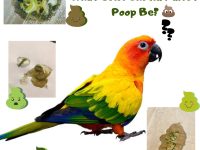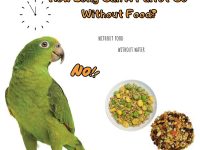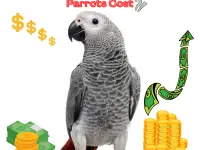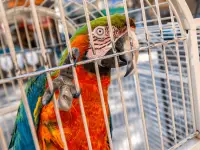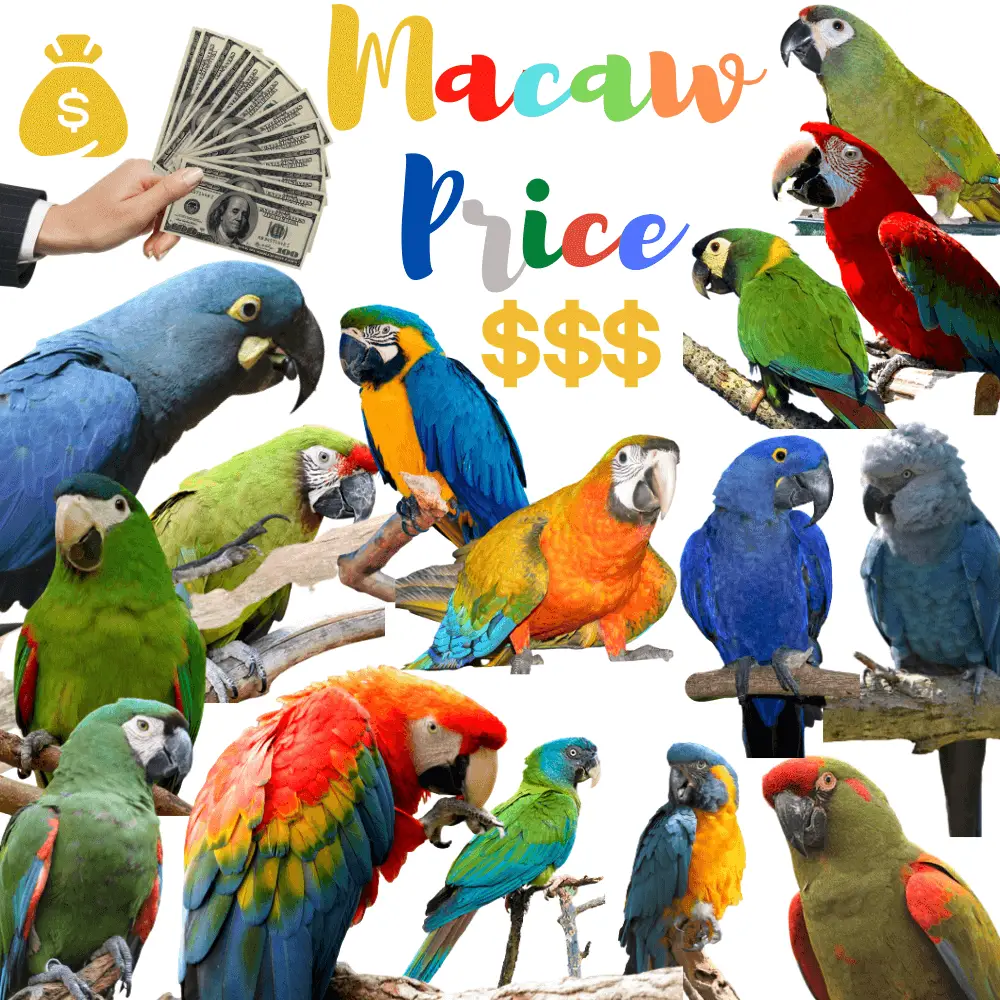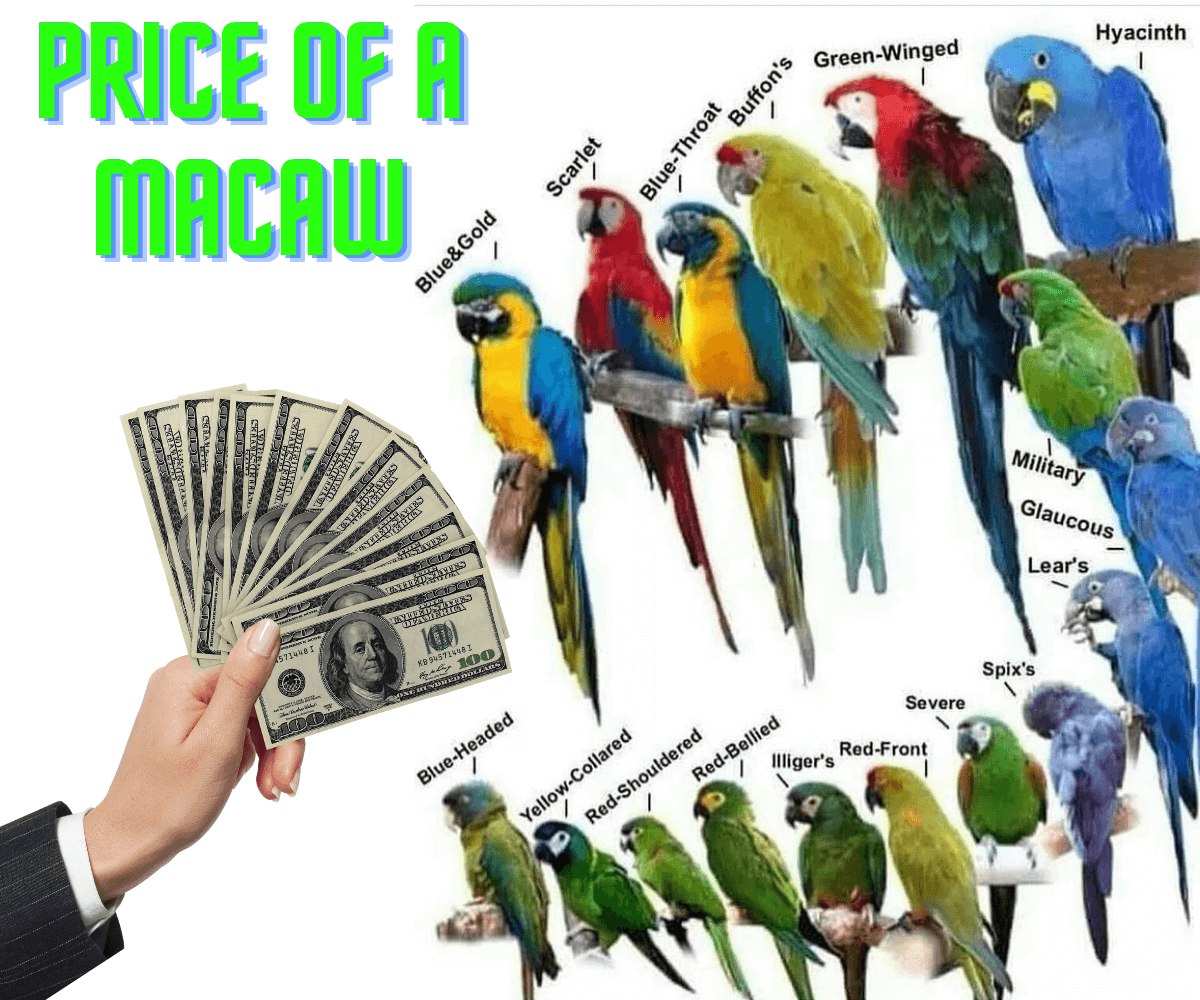
macaw price
Macaw Pricing: Be prepared to spend anything from three figures to adopt, and between $1000 and $19,000 solely for your bird. The final cost hinges on the subspecies, colour scheme, and variety of hybrid. Should you choose the biggest of all domestic parrots, the price of a Hyacinth Macaw might exceed $100,000.
When one speaks of a 'parrot', the image that typically springs to mind is that of a Macaw. Similar to the Lovebird, a Macaw also forms a lifelong and monogamous bond with its chosen partner. These fascinating birds possess notably powerful beaks.
How much is a macaw
How much is a Hybrid Macaw
- Hybrid Macaw: $5000
- Harlequin Macaw: $1,200 to $3,500
- Green llras (red and green)
How much is a blue macaw
- Blue and gold Macaw: $1200 to $1500
How much is a Military macaw
- Military Macaw: $1,200 to $1,500
How much is a scarlet macaw
- Scarlet macaw: $2,500 to $3,500
How much is a hyacinth macaw
- Hyacinth macaw: $10,000 or more
How much is a Spix’s macaw
- Spix’s macaw: $100,000 or more
How much is a Hahn’s macaw
- Hahn’s macaw:$3,000
How much is a Severe macaw
- Severe macaw: $1,500 to $2,500
| Macaw Species | Price Range in 2022 (USD) | Avg Price (USD) |
|---|---|---|
| Blue and Gold Macaw | $1200 to $1500 | $1350 |
| Hybrid Macaw | $1000 to $5000 | $3000 |
| Scarlet Macaw | $2,500 to $3,500 | $2500 |
| Smaller Macaw | $700-$2,000 | $1500 |
Smaller Macaws Price
Price of the mini parrot Macaw: $700-$2,000
The miniatures of the Macaw family, fondly referred to as the little siblings, measure under 50 cm in length and are among the tiniest parrots. One can acquire the green-feathered Hahn’s macaw for less than $3,000. The Severe macaw comes with a price tag of $1,500 to $2,500.
Macaw Care Supplies and Costs
| Cage | $100-$500+ |
| Cage Liner | $5-$25 |
| Perches | $25-$100 |
| Toys | $25-$100 |
| Food | $20-$100 |
| Feeding Plates/Water Dishes | $5-$30 |
| Calcium Block | $5-$10 |
| Treats | $5-$20 |
| Flight Harness | $25-$50 |
| Cleaning Supplies | $10-$20 |
| Bird Bath | $10-$40 |
| Veterinary Exam | $50-$200 |
Price of a macaw
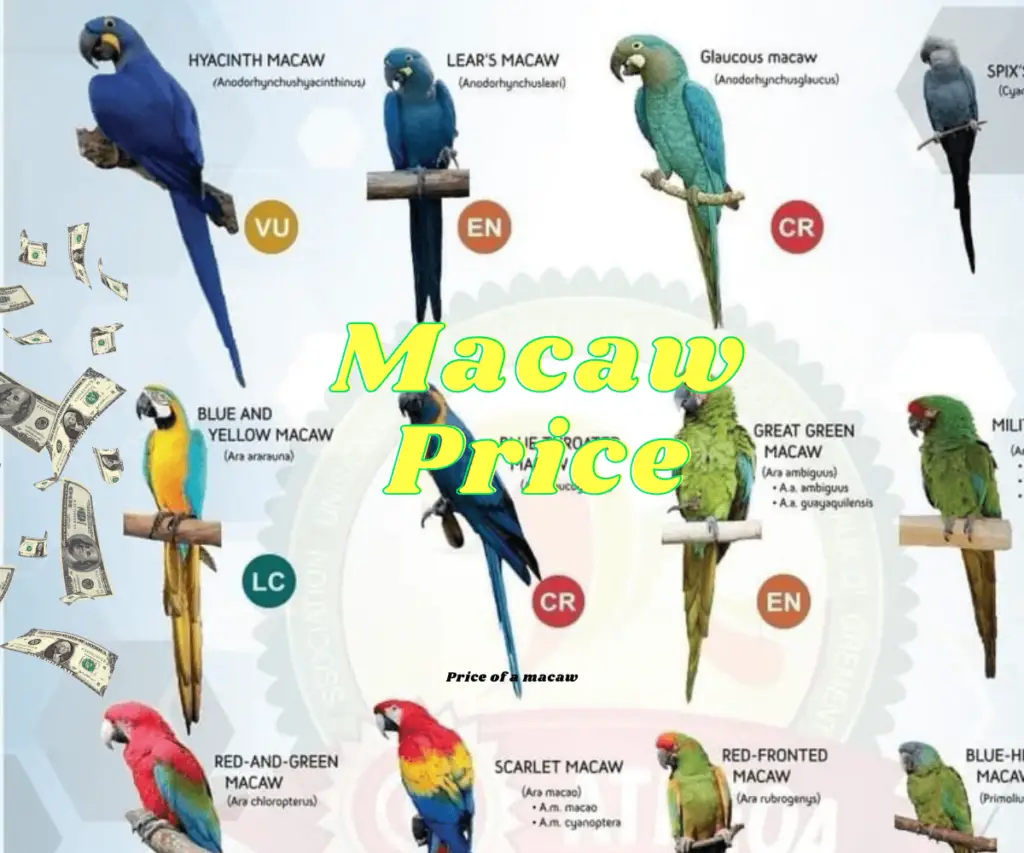
macaw parrot price
Blue and yellow Macaw: the price of this bird, health & behavior
The Blue Macaw is under protection. Much like its natural habitat, this species faces the threat of extinction. Originating from the Amazon, it’s a member of the Psittacidae family. The Blue Macaw's strikingly beautiful plumage and its reported knack for mimicking human speech make it stand out.
This species primarily thrives in damp forest areas. It is found throughout South America, with populations scattered across Brazil, Guyana, Peru, Argentina, Bolivia, Colombia, and Ecuador.
The Blue and Yellow Macaw measures about 85-90 cm in length and typically weighs between 1-1.3 kg. It features a thick, hooked dark grey beak. Its broad wings, when stretched, can produce a wingspan of 105 to 115 cm. Along with an elongated tail, the Blue Macaw possesses long, sharp claws.
This species is known for its distinctive and bright plumage. Yellow and blue hues are particularly pronounced in this bird's colouring.
The upper body of this bird is a gleaming turquoise, transitioning to a golden yellow on the underparts. Its head boasts a blue-green crest, and its cheeks are white with black streaks beneath each eye. The bird also has a black band around its neck. The eyes, limbs, and tail exhibit tints of yellow, while the tail also carries a bluish-purple hue. Before maturity, the irises of Blue Macaws are brown.
Male Blue Macaws are larger as compared to their female counterparts, and their plumage tends to have darker shades.
Behavior & Character
In the wild, the Blue Macaw is very sedentary. It usually leaves its territory only in the event that food is lacking. It is also a gregarious species. He likes to live in groups, often composed of about twenty individuals. It is also a monogamous bird that most often lives in pairs. The blue and yellow parrot stays with the same partner throughout its life. The pairs of blue Macaw are also very fusional.
This large blue parrot is a diurnal and arboreal bird. It evolves in the trees, but it also happens to go down to the ground to nibble on the nuts and fruits that fall there.
The bird is known to be very expressive and noisy. Its cries are guttural and come in a very wide range of songs and noises. On the other hand, this species is relatively sociable. The bird is also described as being particularly endearing and playful.
In an environment where he feels persecuted, the blue Macaw will be more reserved. On the other hand, when it is in a more secure environment, it is less fierce. Individuals who are used to human contact may even be quite familiar.
It is mainly at dawn and in the evening that the blue and yellow parrot makes its flights to feed. Its wing beats are very slow and it only performs direct flights.
Health
The blue Macaw enjoys a long service life. If in the wild an individual can live between 30 to 40 years, in captivity, this longevity is estimated at about sixty years. This species reaches sexual maturity around 8 or 10 years of age. The bird has on average one clutch per year at the end of which it can have between 1-4 eggs. In Blue Macaw, only females incubate eggs, and the duration of brooding varies from 24 to 28 days.
Nestlings usually leave their parents’ nest as early as their 3rd month of life. They remain nestled and feed on what their parents bring them and become fully independent only from 7 or 8 months of age.
The blue and yellow parrot is a relatively hardy bird. Despite everything, he is not insensitive to various diseases and he needs to have a good follow-up. This species can suffer from chlamydia or conjunctivitis. She can also develop follicular cysts, be plagued by capillary worms, etc.
For its well-being, this bird needs to evolve in a large cage. An aviary placed outdoors is even very popular. It is essential to choose its location of it well in order to protect the bird from different weather conditions.
Since it is a particularly active bird, it is necessary to provide it with solid perches in its cage. He will also need to have trunks at his disposal as well as adapted accessories (a shelter, a feeder, and a drinker).
This bird is a herbivore that feeds mainly on seeds, flowers, nuts, and fruits. It sometimes ingests clay, particularly rich in mineral salts, to help it better digest any toxins that may be present in some exotic fruits for parrots.
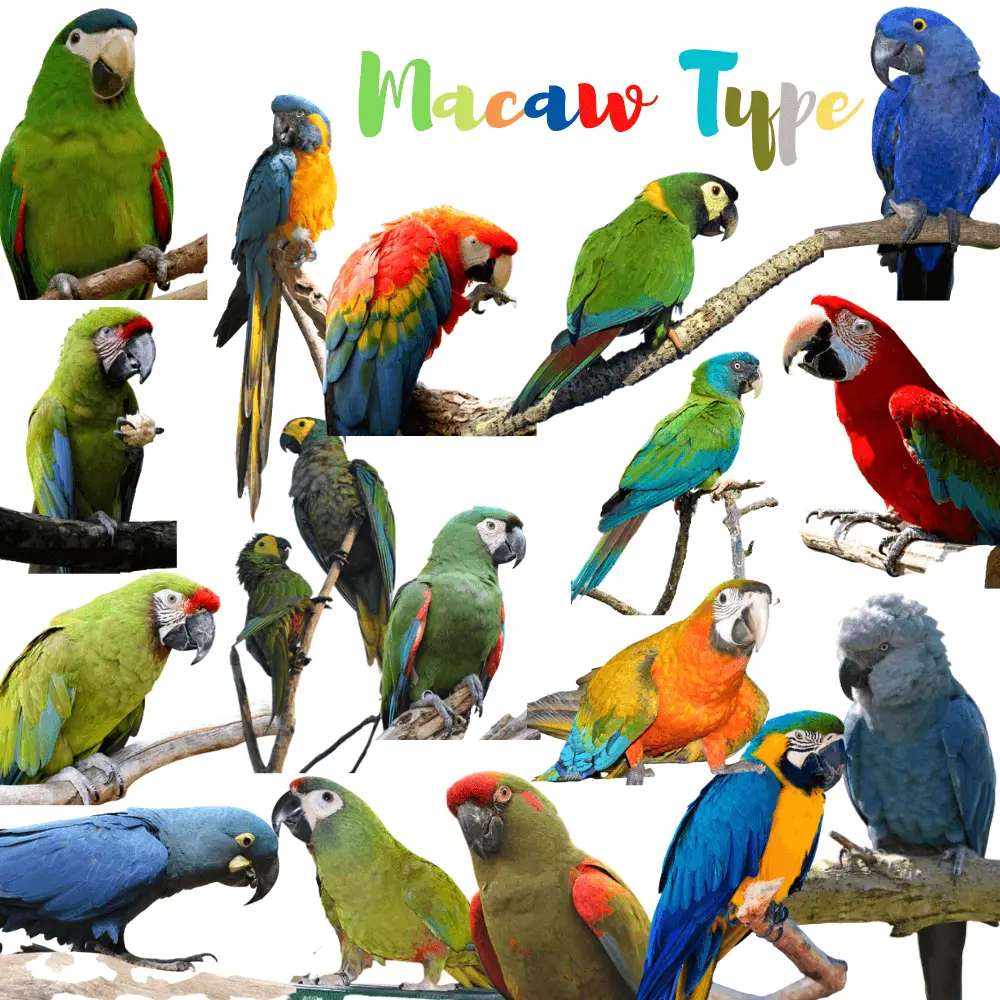
Types of Macaws
Macaw Type: There are 16 species of macaws. From 12 to 40 inches in length ( 30cm to 1 m. ), 150 grams to 1800 grams. Color varies from blue parrot to red parrot and green parrot.
-
- Hyacinth macaw
- Blue-throated Macaw
- Red-fronted Macaw
- Chestnut-fronted macaw
- Red-shouldered macaw
-
- Military Macaw
- Spix’s Macaw
- Glaucous Macaw
-
- Blue-and-gold Macaw
- Yellow-collard Macaw
- Illiger’s or Blue-winged Macaw
-
- Scarlet Macaw
- Hahn’s Macaw
- Red-bellied Macaw
- Green-winged Macaw
- Lear’s Macaw
- Chestnut-fronted Macaw
- Noble Macaw
- Coulon’s or Blue-headed Macaw
Macaw lifespan
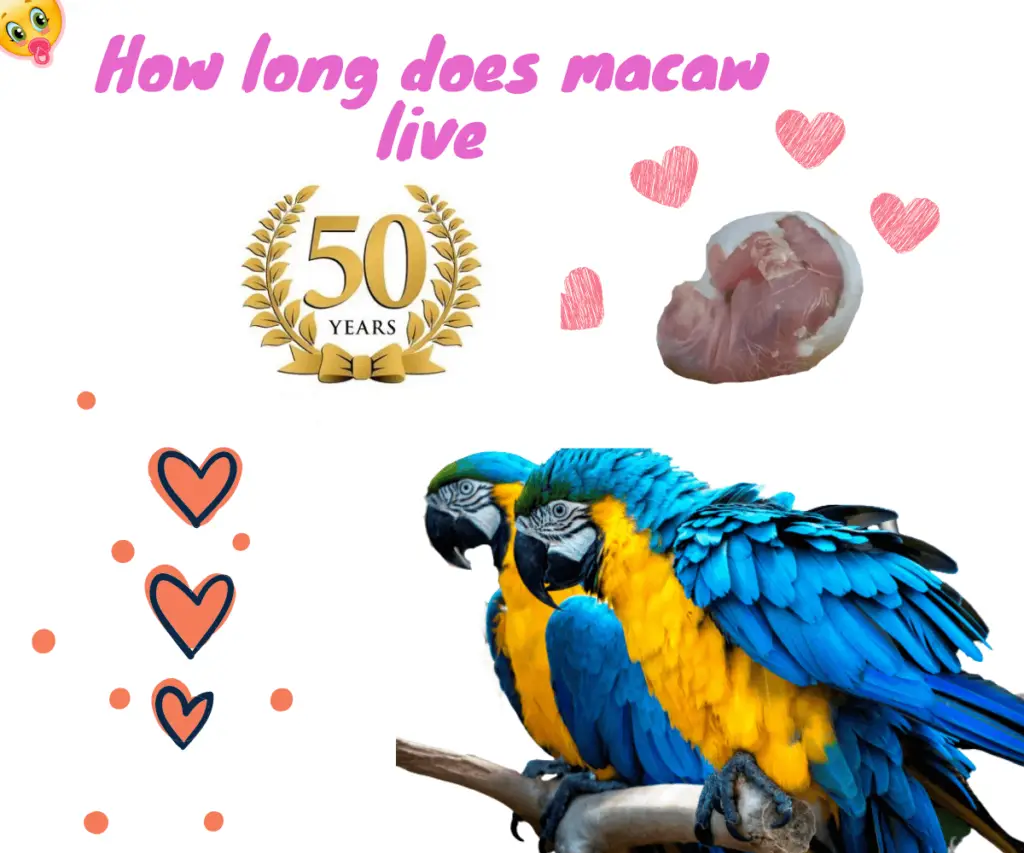
All you need to know about how long macaw live
Life of the macaw parrot
Macaws are a group of parrots that exhibit the main distinguishing features of long tail feathers, large beaks, and often naked faces without white feathers. The lifespan of different macaw species varies from 20 to 60 years.
The lifespan of the great macaw parrot
Large macaws tend to live on average much longer than small versions of macaws, with the lifespan of large macaws ranging from 30 to 60 years. It is not uncommon for large, well-groomed macaws to live more than 60 years.
The lifespan of the blue and gold macaw parrot
the blue and gold macaw is known for its strong vocalizations and ability to imitate human speech, as well as for its very beautiful plumage. Life expectancy is 30 to 35 years.
The lifespan of the green-winged macaw parrot
It is a bird that is covered with red feathers, except for its wings which are covered with green and blue feathers. This is what gives the bird its other name, the red and green macaw. You can expect a green macaw to live from 50 to 60 years.
Life of the hyacinth macaw parrot
This parrot with dark blue plumage is one of The largest parrot species, and is quite rare and expensive to own. You can expect a hyacinth macaw to live from 40 to 50 years.
The lifespan of a hybrid macaw parrot
Closely related macaw species can reproduce with each other to form a hybrid macaw species. It will share the characteristics of both bird species. This makes their lifespan a little more variable, but on average, they are likely to live 40 to 50 years. Two hybrid macaws are listed below:
The lifespan of Catalina’s macaw parrot
This hybrid is created when a red macaw is mated with a blue and yellow macaw. A Catalina macaw will have a lifespan of about 40 years.
The lifespan of a Harlequin macaw parrot
A very common hybrid among macaw crosses, a Harlequin macaw is obtained when green-winged macaws are mated with blue and yellow macaws. The lifespan of a Harlequin macaw is about 50 years.
The lifespan of a macaw parrot Military
The feathers of this bird resemble those of a green military uniform, hence its name. A military macaw probably lives 45 to 60 years.
The lifespan of a mini macaw parrot
A classification for a group of smaller macaw species, which are less than 50 cm tall. They tend to live from 20 to 30 years.
Life of the green macaw parrot
It has a very long tail feather as one of its most prominent features. The macaw is also called the brown-fronted macaw. On average, this macaw lives 30 years.
The life span of Hahn’s macaw parrot
A cute and sweet bird species that has green plumage on most of its body, except for its shoulder where there is a patch of red feathers, which gives it the other name of red-shouldered macaw. Hahn’s macaw lifespan is 20 to 25 years.
The lifespan of the scarlet macaw parrot
For this beautiful red, yellow and blue plumage. You can expect a red macaw to live with you from 40 to 60 years old.
The lifespan of the Spix’s macaw parrot
Now perhaps extinct in the wild, and with only a few hundred birds remaining in captivity in the world. The Spix’s spider macaw is likely to live 30 to 35 years!
Can macaw talk?
Let’s settle this question right away: the parrot does not speak, it imitates. Thanks to its particularly fine hearing, the parrot can imitate surrounding sounds to perfection, which makes it a very good “phrase”.
The Macaw Parrot is not a good speaker like Amazon Parrot Or African Grey or Eclectus Parrot, he can just mimic human speech or phrases, but some macaws like Blue and gold and Scarlet Macaws can learn to talk more quickly than other macaw breeds
How Much Does a Macaw Cost Per Month?
Macaw costs $150–$190 per month this price is for health care, vet, medication, grooming also, food and nutrition and parrot insurance, parrot toys.
Health Care
Macaw Parrot Health care Costs between $50–$400 per month
Vet And Medications
Macaw Parrot Medication and vet Costs between $0–$200 per month
Grooming
Macaw Parrot Grooming costs between $5–$50 per month
Food and Nutrition
Macaw Parrot Nutrition and food costs between $50–$100 per month
Pet Insurance
Macaw Parrot insurance costs between $10–$100 per month
Parrot Toys
Macaw Parrot toys costs between $20–$50 per month
Environment Maintenance
Macaw Parrot environment maintenance costs between $10–$50 per month
Pet Sitting
Macaw Parrot sitting costs between $200-$500
Emergency Care
Macaw Parrot Emergency care costs between$250-$2,000
Price for macaw
Macaw parrots are NACs that turn out to be extremely expensive. There is no specific price for the acquisition of a blue Macaw. What is more, since it is a protected species, its marketing is quite complex.
On the other hand, the adoption of this type of animal requires the possession of specific authorization, including a certificate of capacity. To obtain this document, you must apply to your prefecture before acquiring your bird.
The purchase price of a Macaw varies according to the species, origins, age, and the breeding that sells it. On average, to obtain a Macaw from a specialized breeding center, it takes between $ 750 and $ 2,900. Even if there are individuals and pet stores that offer species of Macaw for sale, it is always better to get closer to a farm.
Although the prices there are relatively higher, it allows you to see for yourself the conditions in which the birds are bred. A professional breeder will also be better able to give you the best advice to take care of your parrot.
Macaw price list update
SOURCEPetssLife
